Epichorista lindsayi is a species of moth in the family Tortricidae. It is endemic to New Zealand. This species is classified as Nationally Endangered by the Department of Conservation.

Epichorista tenebrosa is a species of moth in the family Tortricidae. This species is endemic to New Zealand. It is found in Otago and has been collected in tussock grassland habitats. It is a late autumn emerging moth and adults are on the wing in February. It is classified as "At Risk, Relict'" by the Department of Conservation.

Gymnobathra callixyla is a moth in the family Oecophoridae first described by Edward Meyrick in 1888. It is endemic to New Zealand.

Anisoplaca fraxinea is a species of moth of the family Gelechiidae. It was described by Alfred Philpott in 1928 and is endemic to New Zealand. It has been observed in the South Island and adults are on the wing in February and March.

Sagephora exsanguis is a species of moth in the family Tineidae. It was described by Alfred Philpott in 1918. This species is endemic to New Zealand and has been found on Cuvier Island, as well as the North and South Islands. The adults of this species are on the wing from October to December.

Gymnobathra is a genus of moths in the family Oecophoridae. It was first described by Edward Meyrick in 1883. All species are found in New Zealand.
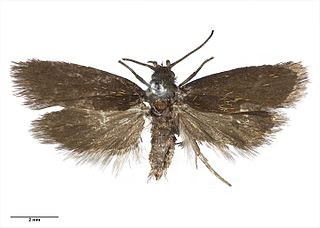
Hierodoris squamea is a moth of the family Oecophoridae. It is endemic to New Zealand and is found in the mountains of Fiordland as well as the Olivine Range in south Westland. This species has a wingspan of between 12 and 13 mm and can be distinguished from similar species as it is very small in size, has a reduced eyespot on its forewings, clearly visible through Scanning Electron Microscope preparations, and has orange-yellow scales overlaying its dark forewing. It prefers open country of tussock grasslands and herbfields at high altitudes. As at 2005 the larvae is unknown. Adults are on the wing in January.

Mallobathra angusta is a moth of the family Psychidae. This species is endemic to New Zealand.
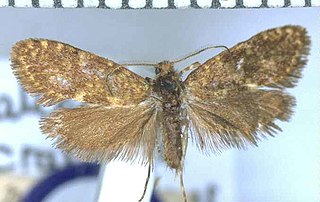
Mallobathra is a genus of moths belonging to the family Psychidae, and are bagworm moths. This genus was first described by Edward Meyrick. It is endemic to New Zealand. The type species of this genus is Mallobathra crataea.

Tingena affinis is a species of moth in the family Oecophoridae. It is endemic to New Zealand and has been found in the Nelson region. Adults are on the wing in December and January.

Tingena aurata is a species of moth in the family Oecophoridae. It is endemic to New Zealand. The adults of the species are on the wing in November and December.
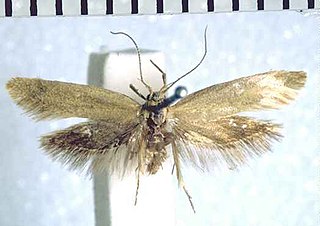
Tingena paula is a species of moth in the family Oecophoridae. It is endemic to New Zealand and has been observed in Canterbury. Adults of this species are on the wing in November.

Tingena serena is a species of moth in the family Oecophoridae. It is endemic to New Zealand and has been observed in Southland and Dunedin. The adults of this species are on the wing in December and January.

Tingena sinuosa is a species of moth in the family Oecophoridae. It is endemic to New Zealand and has been observed in Wellington and at Tongariro. Adults of this species are on the wing in December.

Tingena terrena is a species of moth in the family Oecophoridae. It is endemic to New Zealand and has been observed in Otago. The adults of this species are on the wing in December.
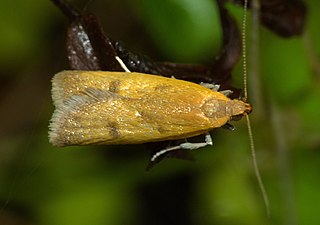
Gymnobathra parca is a moth in the family Oecophoridae first described by Arthur Gardiner Butler in 1877. It is endemic to New Zealand. It has been hypothesised that this species likely belongs to another genus.

Gymnobathra philadelpha is a moth in the family Oecophoridae first described by Edward Meyrick in 1883. It is endemic to New Zealand.
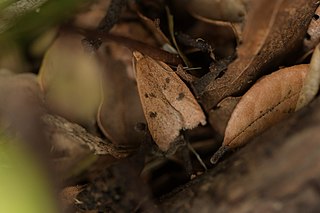
Gymnobathra sarcoxantha is a moth in the family Oecophoridae first described by Edward Meyrick in 1883. It is endemic to New Zealand. It has been hypothesised that this species likely belongs to another genus.

Gymnobathra tholodella is a moth in the family Oecophoridae first described by Edward Meyrick in 1883. It is endemic to New Zealand. It has been hypothesised that this species likely belongs to another genus.

Protosynaema matutina is a species of moth in the family Plutellidae first described by Alfred Philpott in 1928. It is endemic to New Zealand.



















